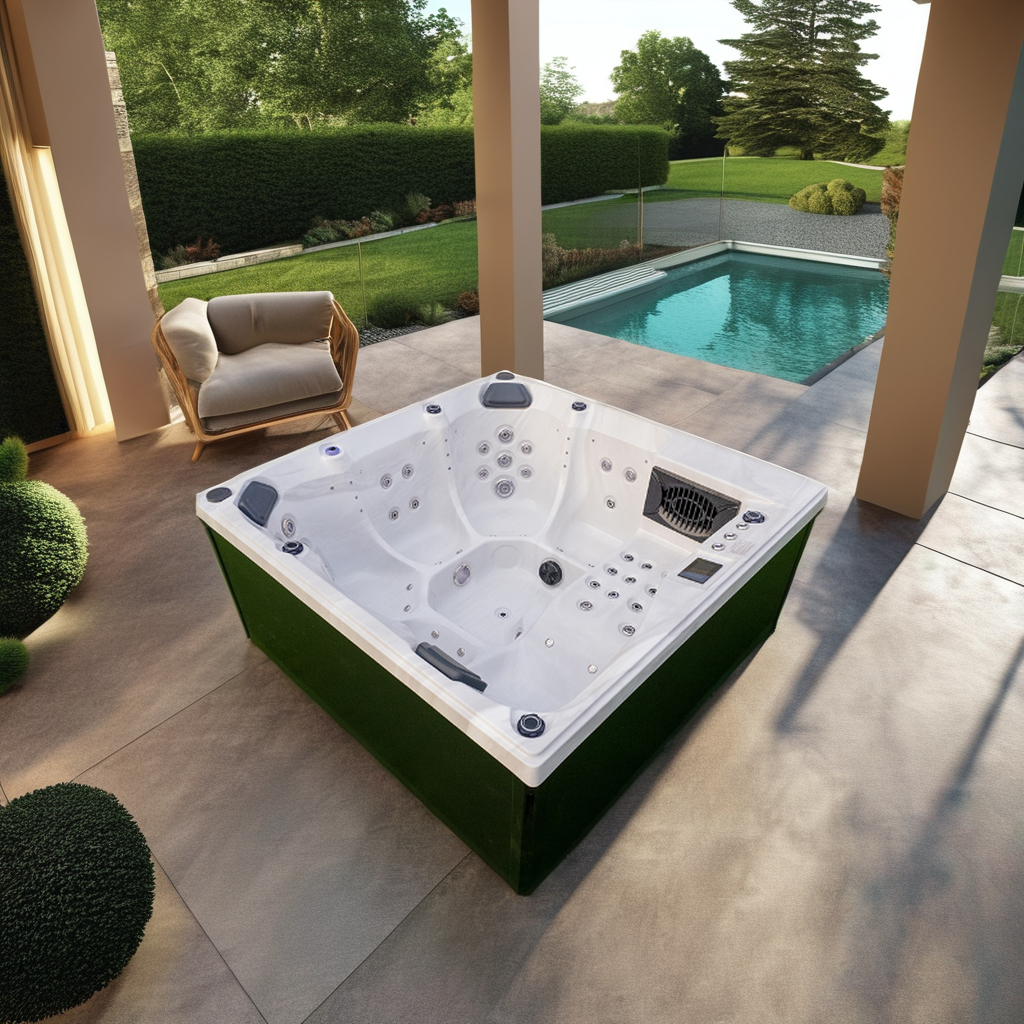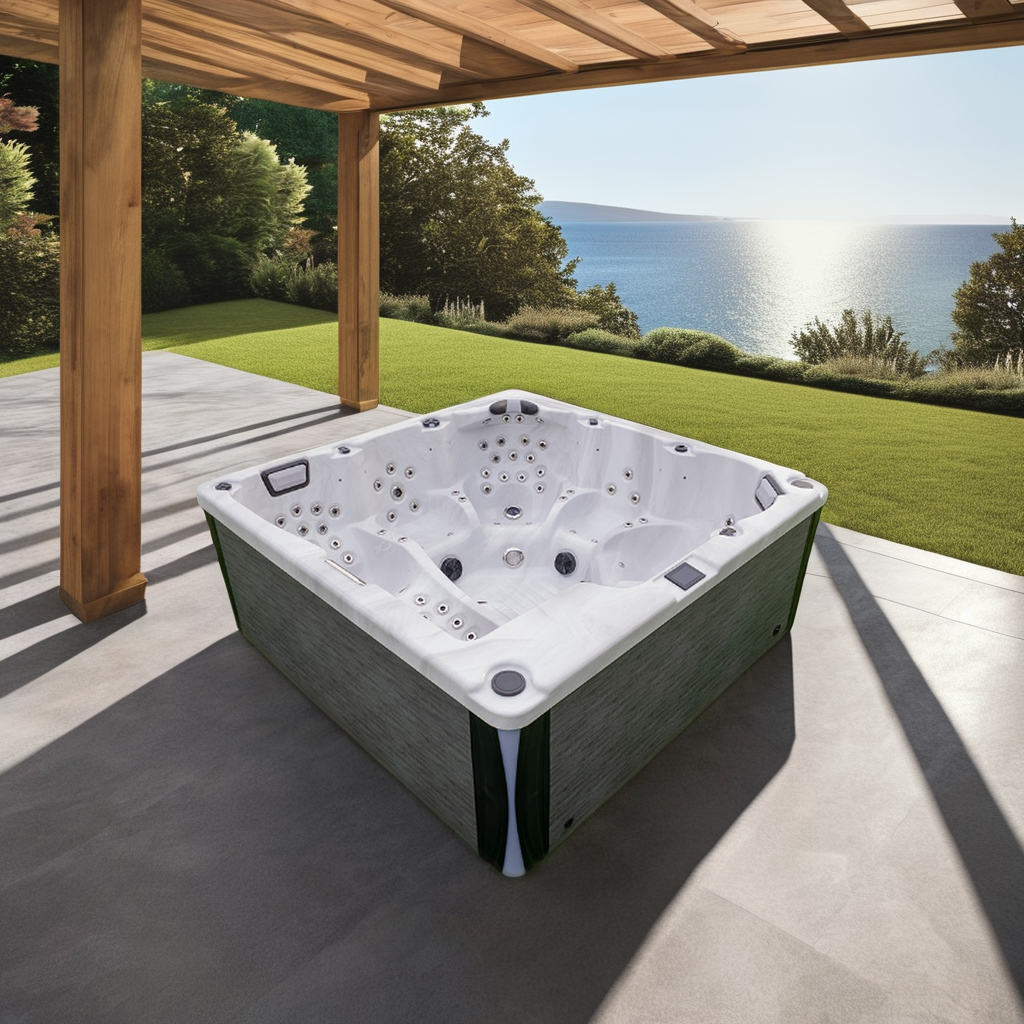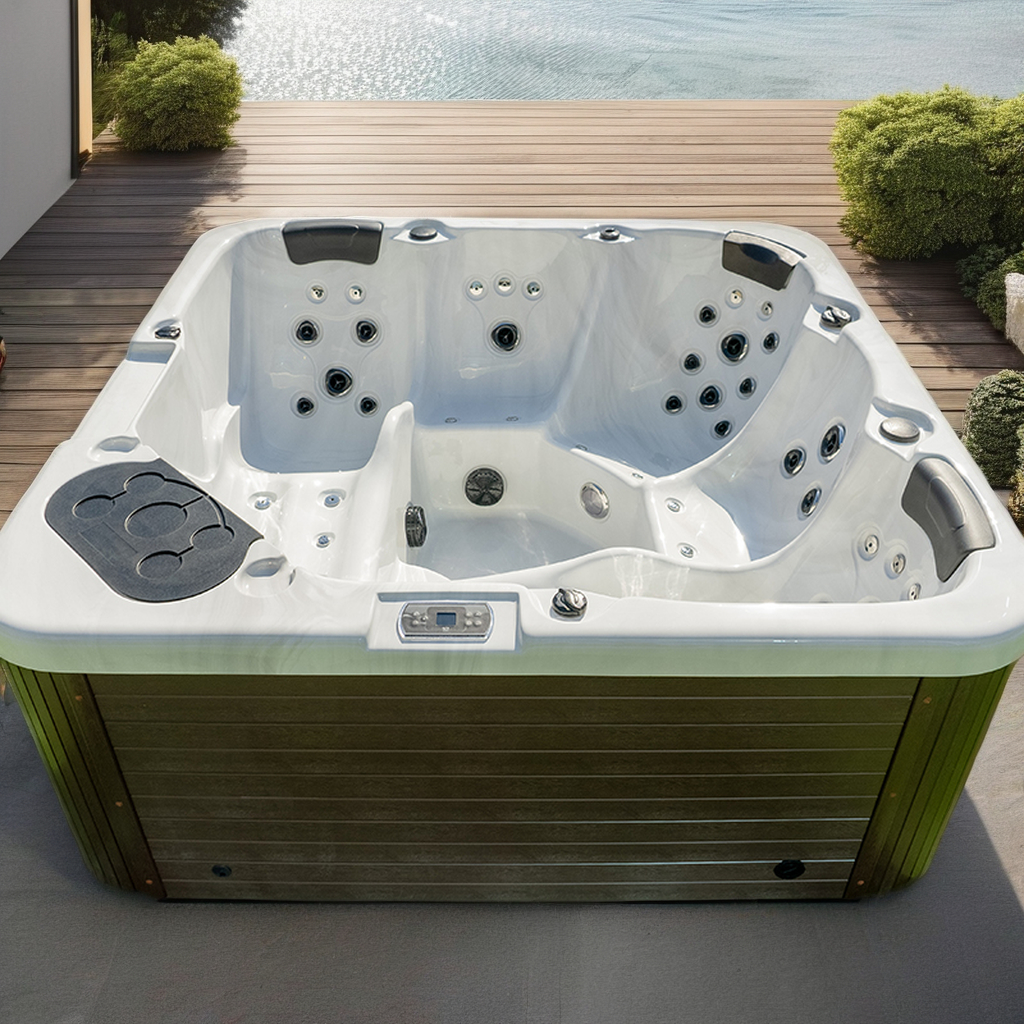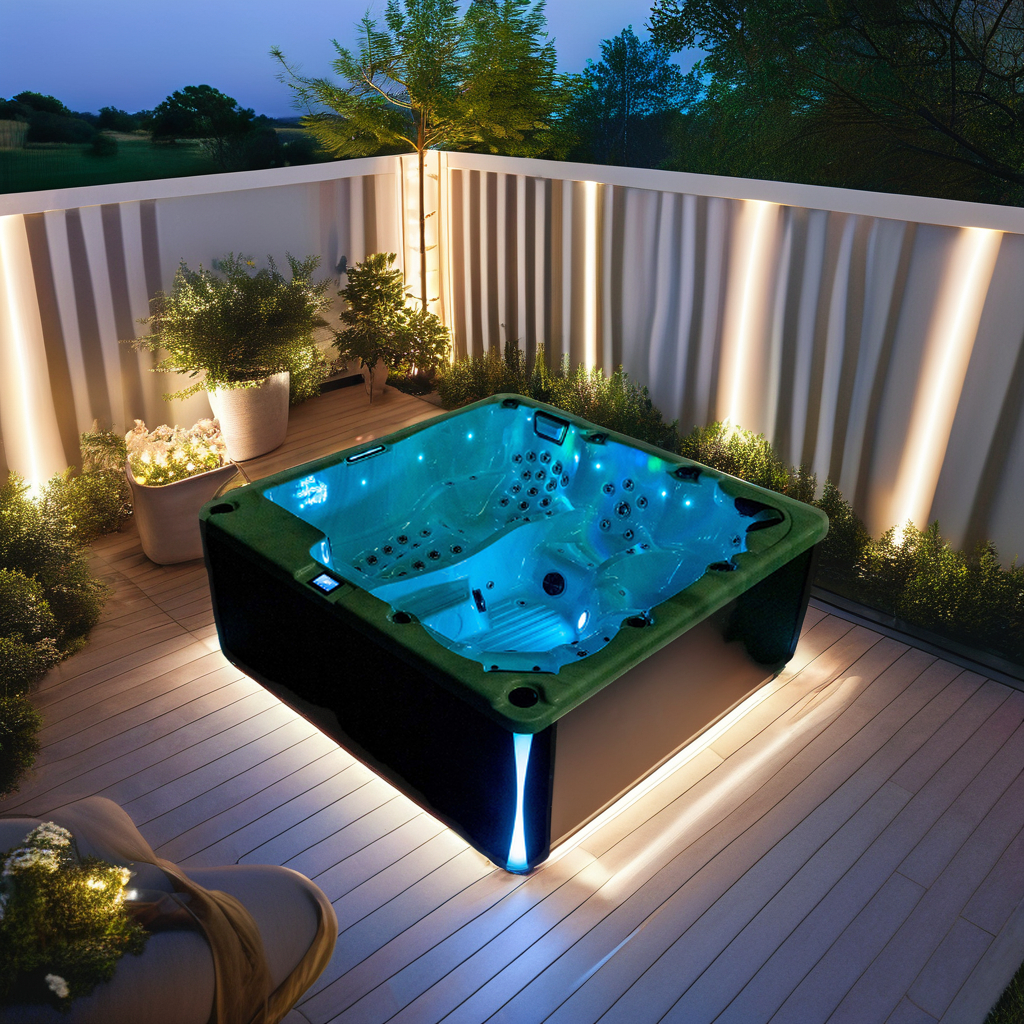
How to Repair Hairline Cracks in Acrylic Spas?
2025-10-17 15:30Acrylic spas are widely used in modern homes and high-end leisure facilities due to their attractive appearance, excellent thermal insulation, corrosion resistance, and flexible installation. However, no matter how high-quality the material, hairline cracks may develop on the surface of acrylic spas over time.
These cracks may appear harmless at first, but they often indicate early signs of structural fatigue, water pressure issues, thermal expansion and contraction stress, or localized damage. If not repaired promptly, cracks can expand into more serious damage, compromising watertightness and safety, and even rendering the entire acrylic spa tub unusable.
This article systematically explains: identifying hairline cracks in acrylic spas, analyzing their causes, the professional repair process, material selection, installation steps, and post-repair care. It aims to help users scientifically and effectively address this common problem, thereby extending the lifespan of their acrylic spas and maintaining their functionality and aesthetics.

Common Signs of Hairline Cracks in Acrylic Spas
Before repairing, it is important to correctly identify the presence of hairline cracks. Hairline cracks are cracks that are less than 0.5 mm wide, less than 30 cm long, and primarily surface-dry, but not completely penetrating the structure of an acrylic spa tub. These cracks typically manifest in the following ways:
· Spiderweb cracks: These are often found radiating around the showerhead or in the center of the base.
· Hairline cracks: These are thin lines, roughly the thickness of a hair, extending along the direction of stress.
· Wear-line cracks: These cracks develop in areas frequently stepped on due to long-term friction and fluctuating water temperatures.
· Whitening cracks: These cracks appear in areas of heavy use due to prolonged wear and tear and water temperature fluctuations.
· Whitening cracks: These cracks appear as localized discoloration or whitening, indicating that the acrylic layer has begun to lose its structural elasticity.
Although these cracks are visible to the naked eye, if no water seepage or leaks occur, they are generally considered to be in the "early stages of damage" and can be repaired at home or professionally.

Analysis of the Causes of Hairline Cracks in Acrylic Spa Tubs
To effectively repair a hairline crack, it is important to understand the root cause of the cracks. Cracks in acrylic spa tubs are typically caused by the following factors:
1. Thermal Expansion and Contraction
Acrylic is a thermoplastic material with a high coefficient of linear expansion. Frequent hot water system cycles cause the surface to continuously contract and expand, leading to fine cracks in areas of stress concentration over time.
2. Localized External Impact
For example, a heavy object dropped onto the edge or bottom of the tub can cause microcracks in the surface even without a hole.
3. Uneven Support
If the bottom of an acrylic spa tub lacks adequate foam support, movement within the tub will create bending forces in the unsupported areas, leading to stress cracks over time.
4. Detergent Corrosion
Using detergents containing alcohol, ammonia, or strong acids and alkalis can accelerate the aging of the acrylic surface, reducing its flexibility and increasing the likelihood of cracks.

Preparation for Repairing Fine Cracks in Acrylic Spa Tubs
Before beginning to repair fine cracks in an acrylic spa tub, it is crucial to thoroughly prepare the surface to ensure the durability and aesthetics of the repair.
1. Material Preparation
· Acrylic repair agent (liquid acrylic or epoxy)
· Sandpaper (400, 800, 1200 grit)
· Spray gun or soft brush (depending on the repair agent)
· Polyester caulk (optional)
· Cleaner (neutral pH)
· Alcohol wipes or lint-free cloths
· Polishing compound or acrylic protective oil
2. Environmental Requirements
· Avoid working in humid or hot environments;
· Ensure the repair area is well ventilated and dry;
· Ensure the acrylic spa tub is drained and thoroughly dry.
Acrylic Spa Crack Repair Process
The following is a standardized, professional crack repair procedure suitable for most minor to moderate cracks:
Step 1: Clean the Crack Area
Use a neutral detergent to thoroughly scrub the crack and the surrounding 15cm area to remove soap stains, scale, grease, and other contaminants. Then, degrease with an alcohol wipe. Allow to dry for at least 30 minutes to ensure no residual moisture.
Step 2: Surface Sanding
Use 400-grit sandpaper to gently sand the crack area to remove surface oxide and burrs, ensuring better adhesion of the repair material. It's recommended to sand an area slightly larger than the crack itself (e.g., if the crack is 10 cm, the sanding area can be 15 cm).
Step 3: Injecting the Repair Compound
Use a syringe or dropper to slowly inject the liquid acrylic/epoxy resin along the crack, completely filling the crack. Avoid pouring too much at once to avoid overflow or bubbles. Gently scrape the surface as needed.
Step 4: Natural or Heat Curing
Depending on the material's instructions, choose to cure naturally at room temperature (usually 24 hours), or use a heat blower (60-70°C) to accelerate the curing process. Ensure the area is free of vibration and dust.
Step 5: Fine Sanding and Polishing
After curing, wet sand the repaired area with 800- and 1200-grit sandpaper, followed by polishing with acrylic polish until the surface is close to its original gloss.
Step 6: Apply protective oil
To slow the aging process, apply acrylic protective oil to the repaired area and surrounding areas to enhance the surface's resistance to oxidation and scale buildup.

How to determine if a repair is successful?
A successful acrylic spa tub crack repair should meet the following criteria:
· The crack should no longer be visible to the naked eye;
· The surface should be smooth, with no obvious signs of sanding;
· No leakage or bubbling after adding water for 24 hours;
· No creaking or crack expansion during use.
If the repaired area still feels rough or new cracks appear, consider the possibility of a deeper structural problem.
Post-Crack Repair Maintenance Tips for Acrylic Spa Tubs
Even if the crack is successfully repaired, it's important to maintain proper care. Routine maintenance can effectively extend the life of the repair and prevent similar problems from recurring.
1. Avoid large temperature fluctuations
Do not switch suddenly from cold to hot water. It is recommended to maintain a constant temperature to minimize thermal expansion and contraction.
2. Avoid impact with heavy objects
Bathroom supplies should be handled with care to avoid sharp or heavy objects that could fall and cause secondary damage.
3. Choose mild cleaning products
Use a neutral detergent designed specifically for acrylic spa tubs, avoiding ingredients like alcohol and bleach.
4. Regularly inspect the support and seals
Ensure there are no gaps in the base of the acrylic spa tub, and regularly check for minor deformation or localized water seepage.
When is further professional intervention necessary?
If you encounter the following situations, the problem goes beyond "hairline cracks" and requires evaluation and treatment by a professional technician or the manufacturer's after-sales service:
· Cracks extend through the thickness of the tub wall;
· Cracks leak;
· Cracks recur frequently and are ineffective for repair;
· Extensive cracking or delamination occurs.
Repairs are only temporary solutions; a more fundamental solution may involve replacing the panel or reinstalling the entire tub.
Do you run promotions or seasonal sales campaigns?
Yes, our Sales department frequently launches seasonal Promotions to support distributors and Purchasing teams. Discounts may apply during exhibition seasons, holiday campaigns, or when Buyers commit to larger volumes.
As a Manufacturer, we can reduce Prices on Wholesale lots without sacrificing quality. Clients are encouraged to ask for current Promotions when requesting Quotes.
